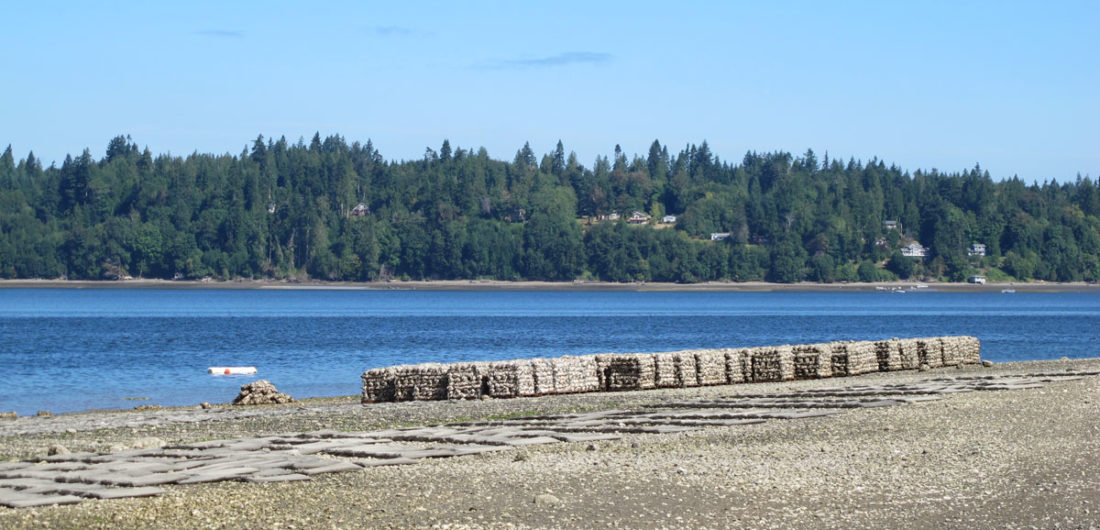Out on the tidal flats of Totten Inlet in WA, it’s hard not to stare in awe at the brilliant blue waters and lush evergreens lining the shore. Far removed from the bustle and grime of NYC, you feel an immediate, nourishing tranquility as you squelch your waders into the living mud. Water laps these acres and then recedes during low tide, uncovering a kaleidoscope of shells, grasses and skittering creatures.
We visited two of Taylor Shellfish Farm’s tideland growing areas, and saw how oysters and clams spend their days on the beach after leaving the nursery. There was plenty to see, touch and taste!
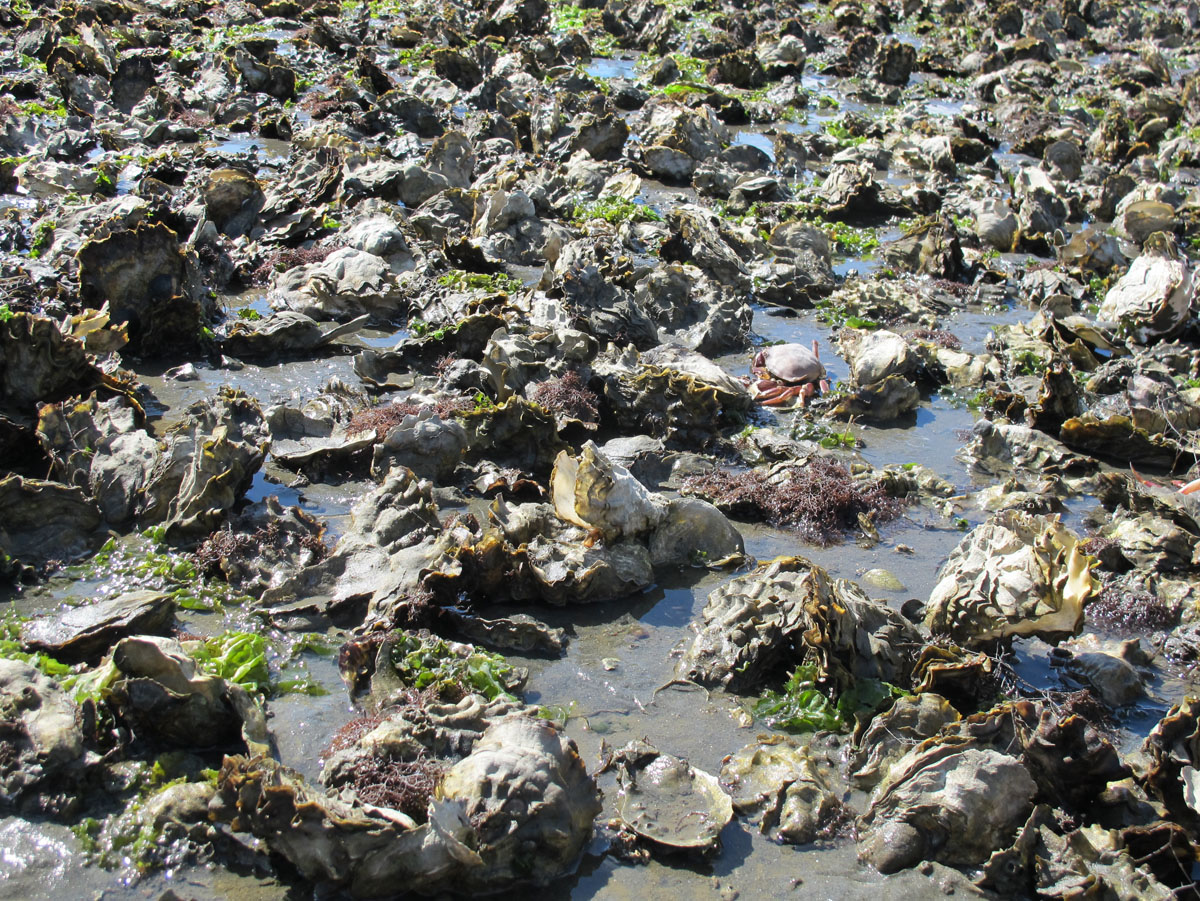
Is this not one of the most beautiful beaches in the world? We tried to tread carefully here and not squash the oysters underneath our feet.
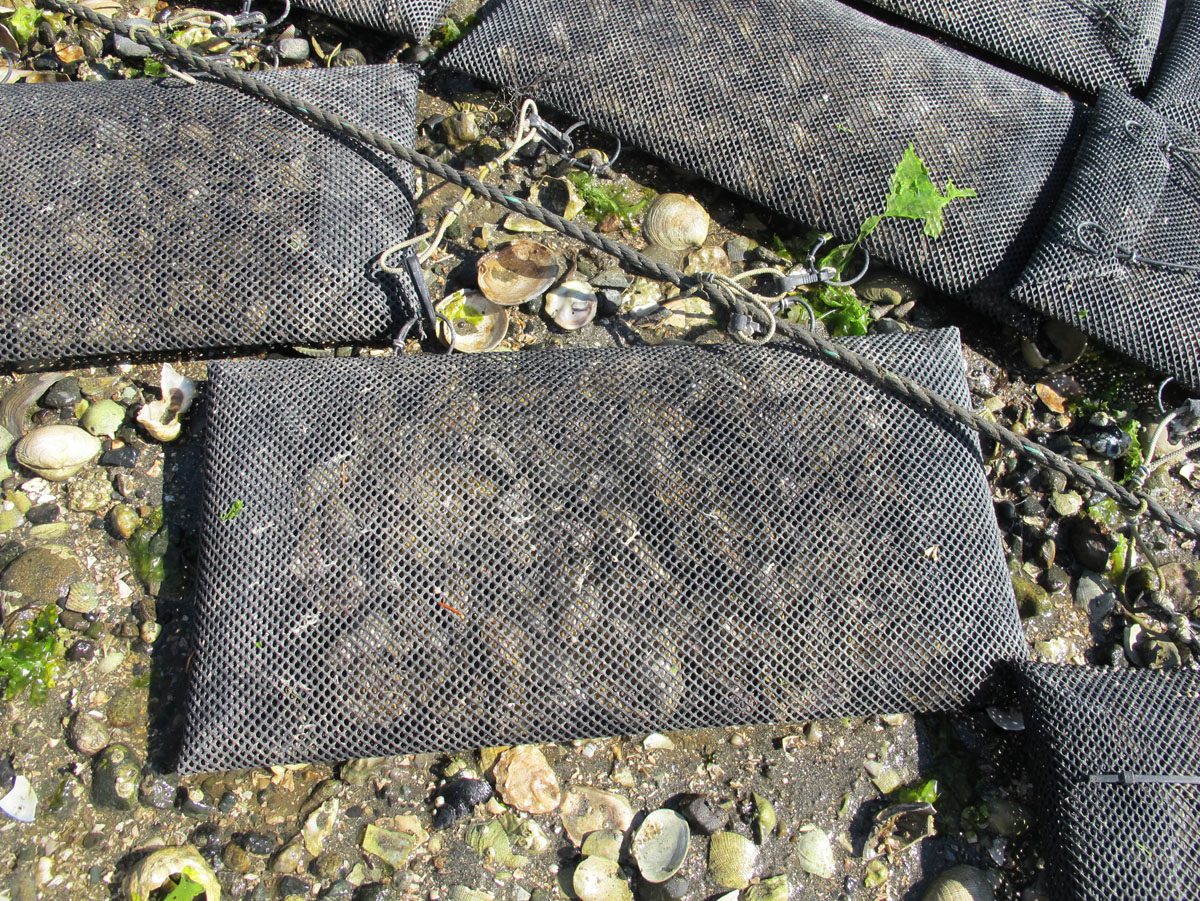
Oyster bags line the beach, with the oysters inside sorted to be similar in size. This helps the oysters grow uniformly and ensures that smaller oysters aren’t competing with larger oysters for food. In about 18 months, they will reach market size (about 3″) and be ready for harvest.
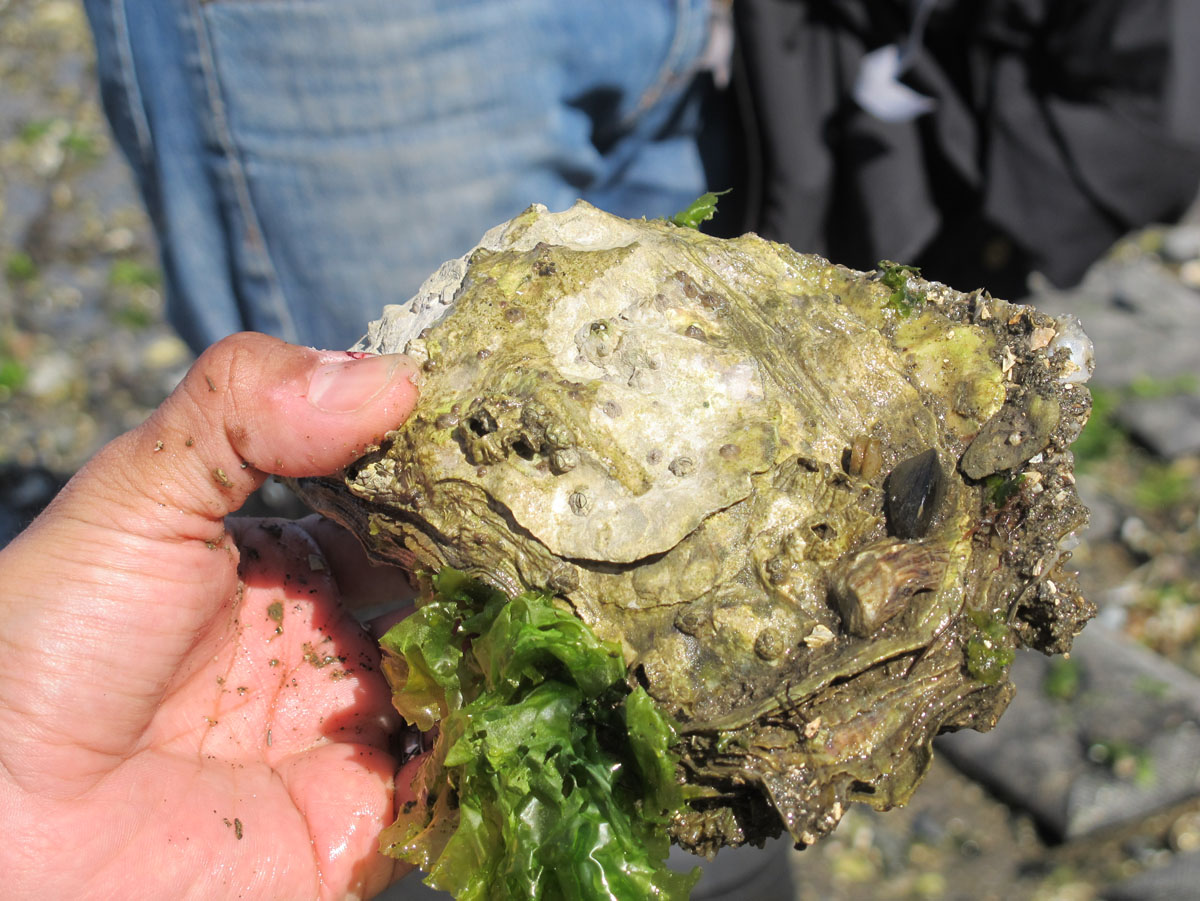
Here’s a hefty, rugged Pacific oyster with a natural seaweed garnish. If you live in the houses surrounding the beach, you can stroll over and help yourself to a few oysters now and then!
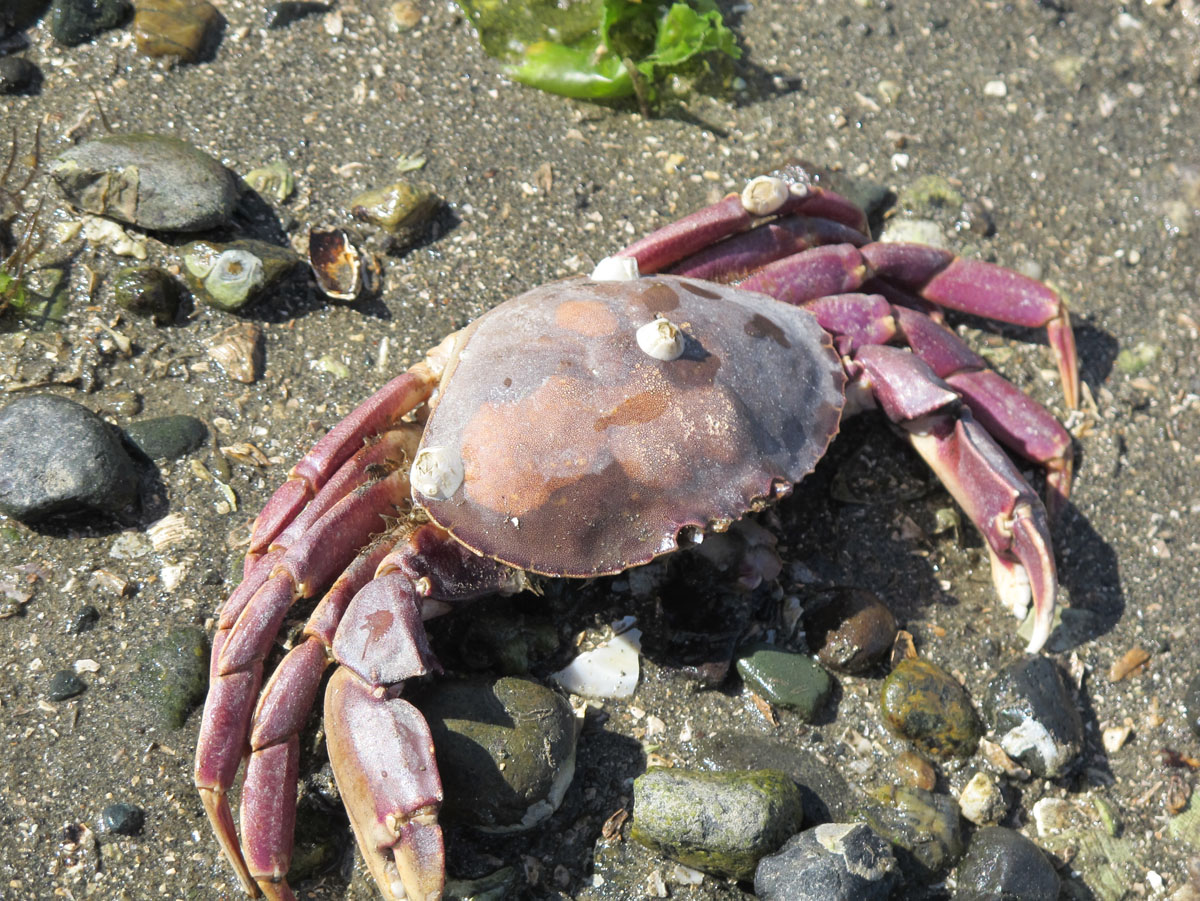
The beach is home to many natural predators for mollusks, like crabs and starfish. Rather than using pesticides or other active deterrents against predators, Taylor Shellfish simply tries to protect their shellfish with bags or cases, and allots a portion of their crop to loss by predation.
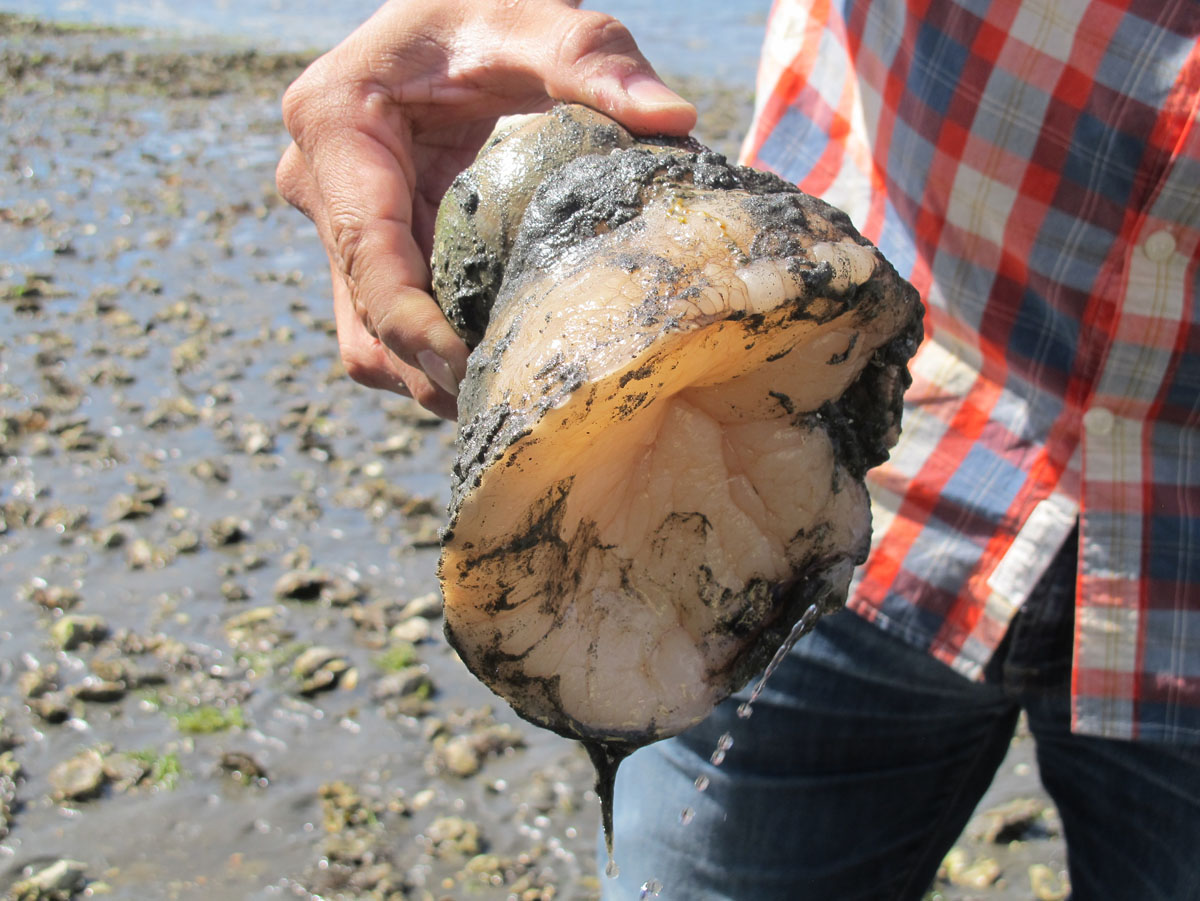
Moon snails are common predators for oysters and mollusks. They drill a small hole into the oyster shell and suck on the innards. By the time you find the oyster again, it is only a shell of its former self.
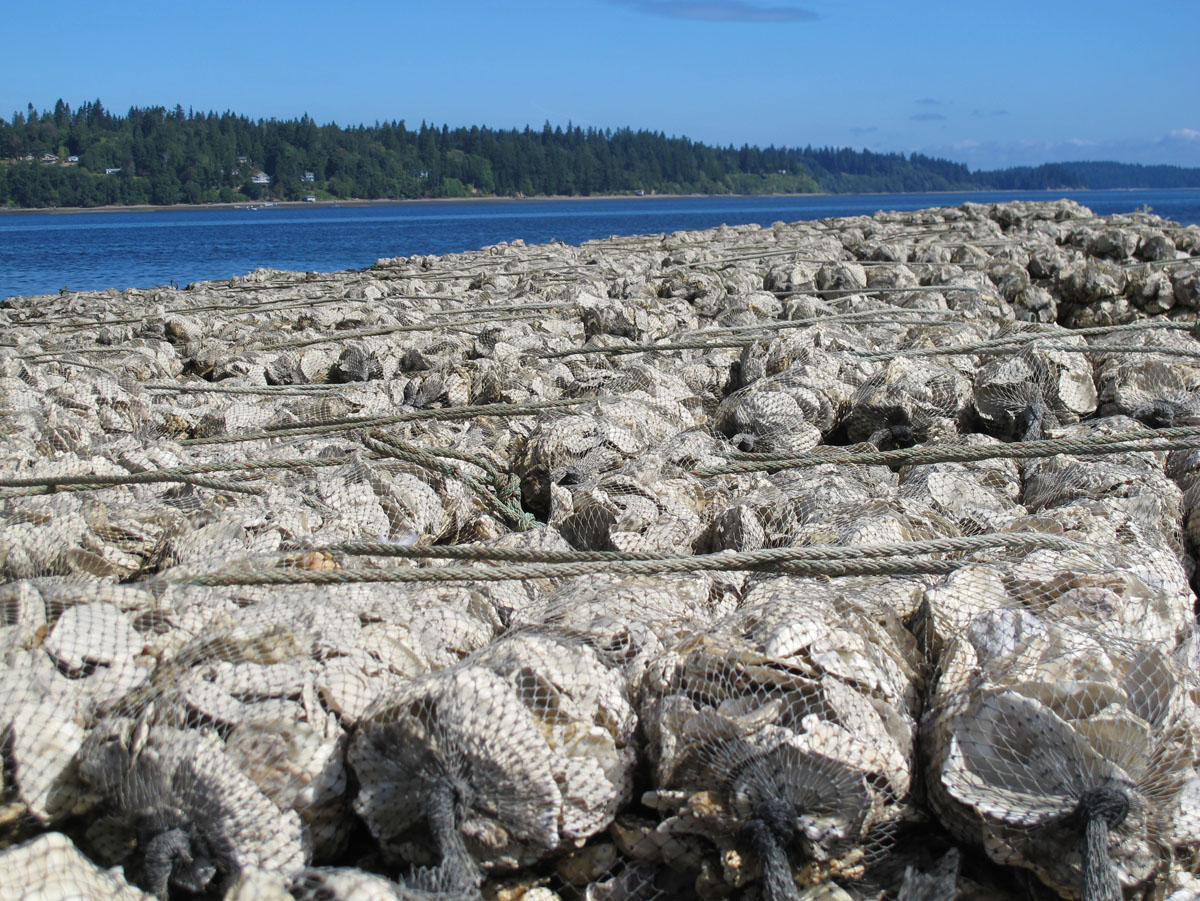
After oysters are shucked, the shells are carefully stacked and dried until they’ve been bleached white and no trace of algae or biological material remains. They will later be crushed into “culch” and used in the hatchery as a substrate for oysters to settle on.
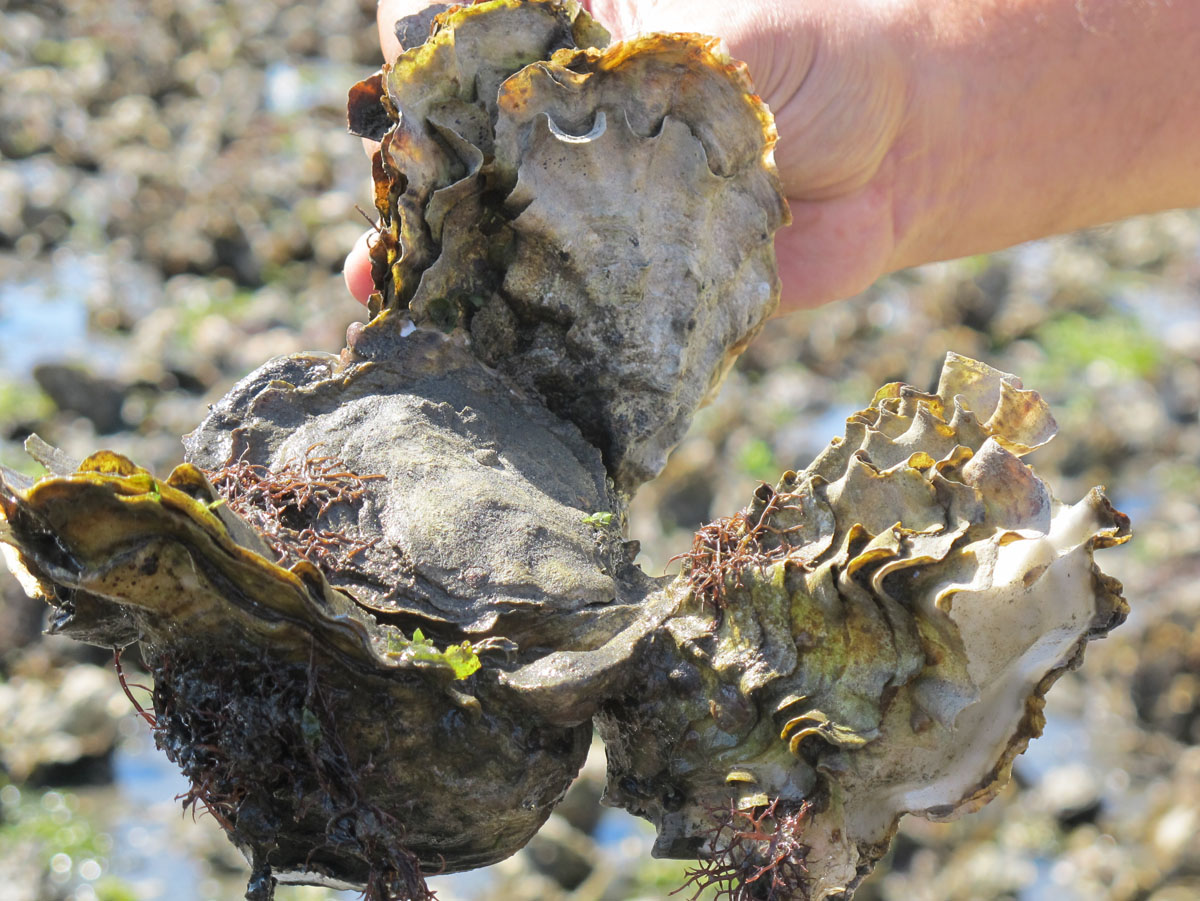
If several oysters attach to a large piece of culch, then the oysters will grow together as shellstock oysters. These clusters will be shucked for oyster meats. On the other hand, if the culch is finely ground so that only one oyster can attach to it, the oysters will grow up to be single cocktail oysters.

At Oakland Bay, Kumamoto oysters lay submerged in shallow pools of water. At the time, about 360,000 dozen oysters were growing in this area.
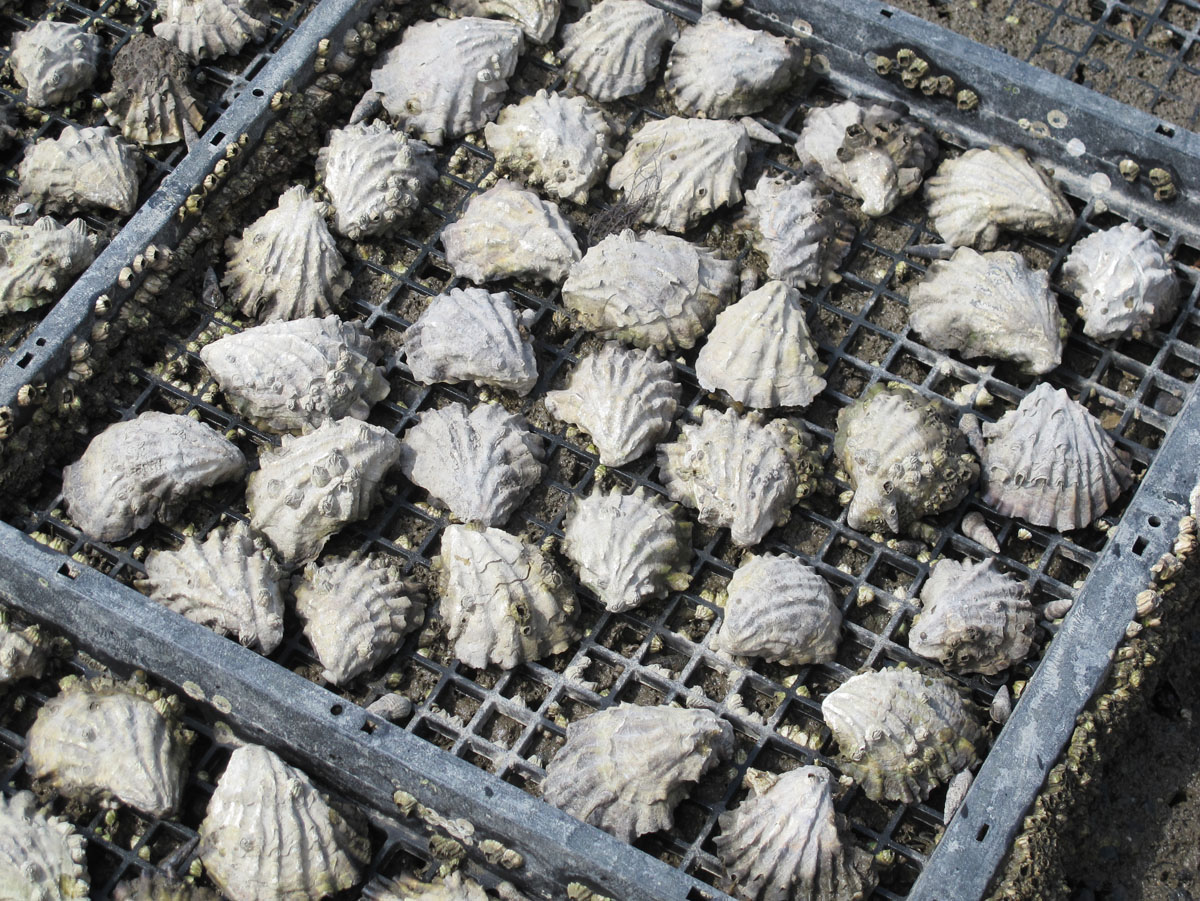
Kumamoto oysters are about 2″ long at adult size. If you ever see a Kumamoto oyster that is much larger than that, it has probably hybridized with another species. Their deep cups and distinctive fluted shells are another unique characteristic.
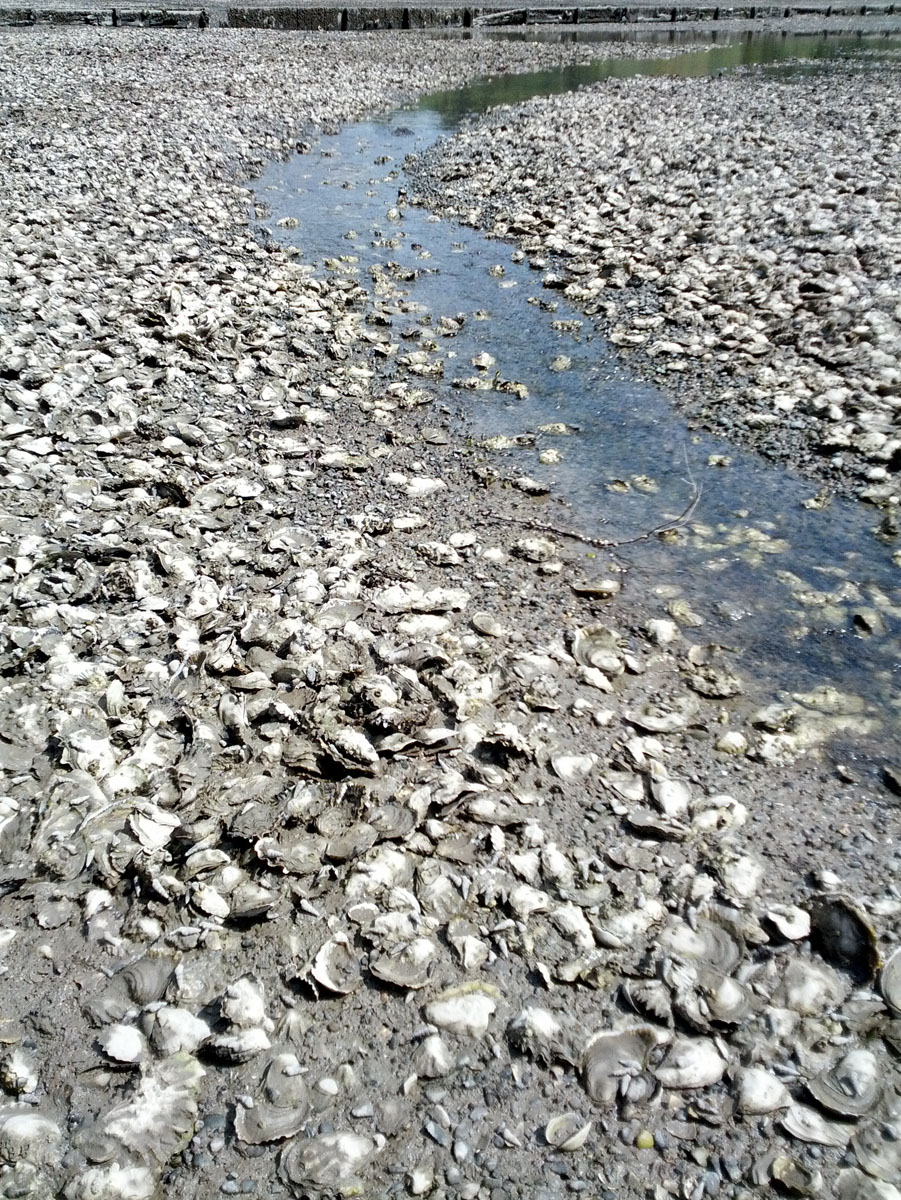
At low tide, the oysters are exposed to the sun and forced to clamp shut. This is a workout of sorts for the oyster, and regular exposure to the air means they will be hardier when the time comes to ship them.
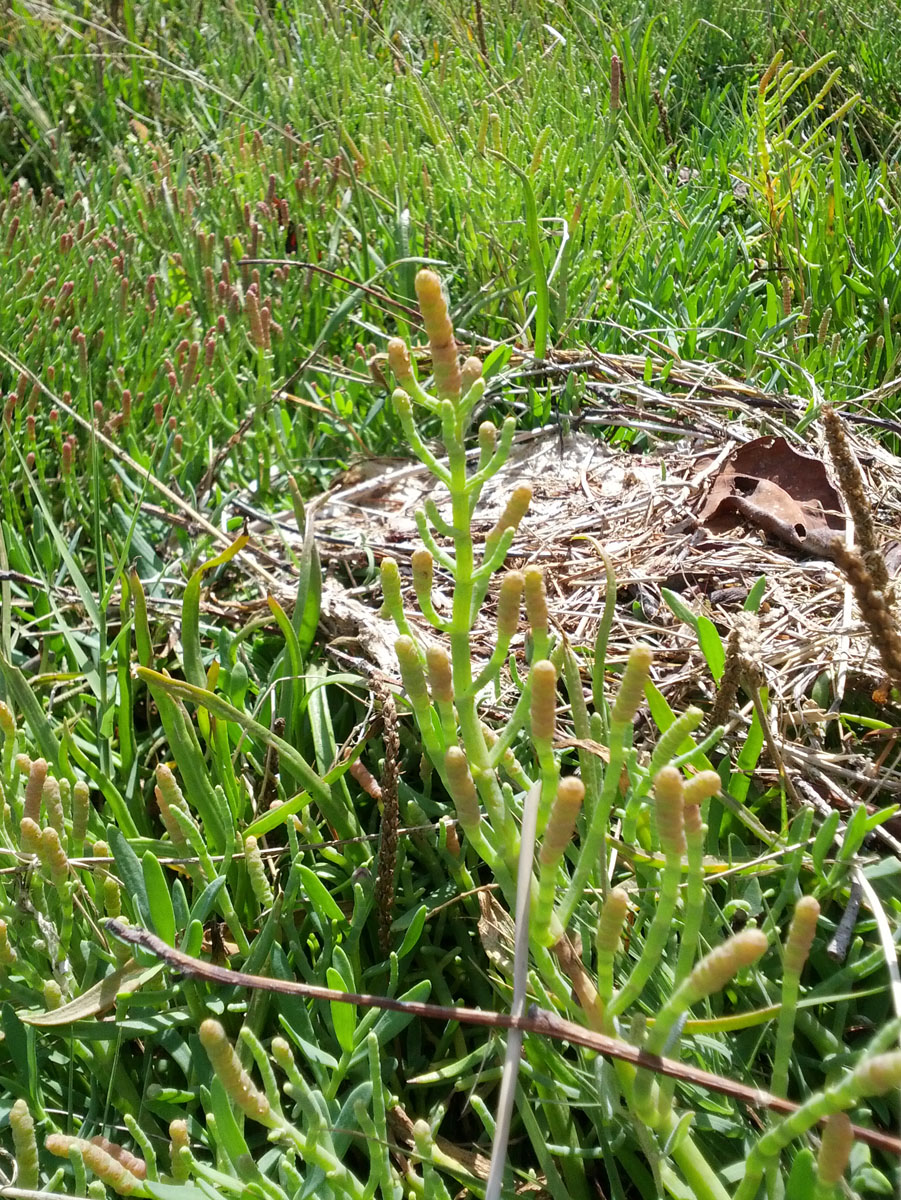
Sea beans grow abundantly around the perimeter of the bay. If you snap off the leaves and eat them raw, you’ll taste a bracing brininess and sweet herbal finish. You can also saute them gently in oil or butter, but do not add extra salt!
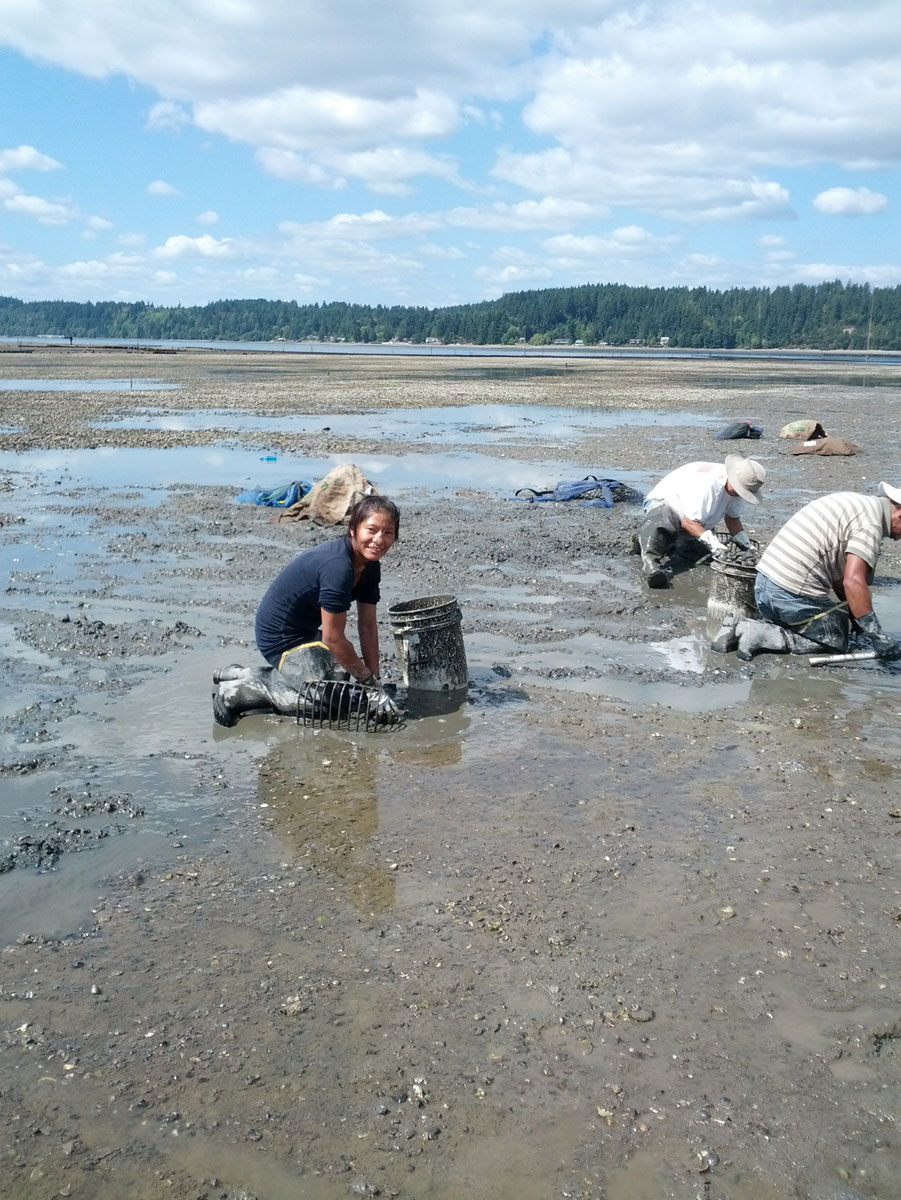
Oakland Bay is also home to manila clams. After growing for three years, the clams will be dug and harvested by hand.
Stay tuned to see how these oysters and clams will be processed and packaged after harvest!
Previously: Shellfish Hatcheries & Nurseries: Where do oysters come from?
